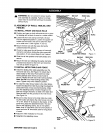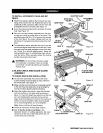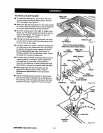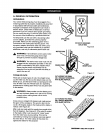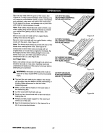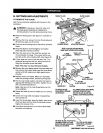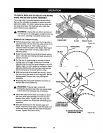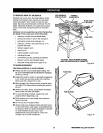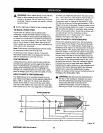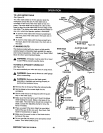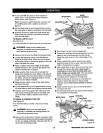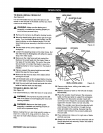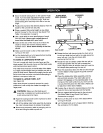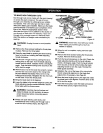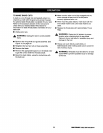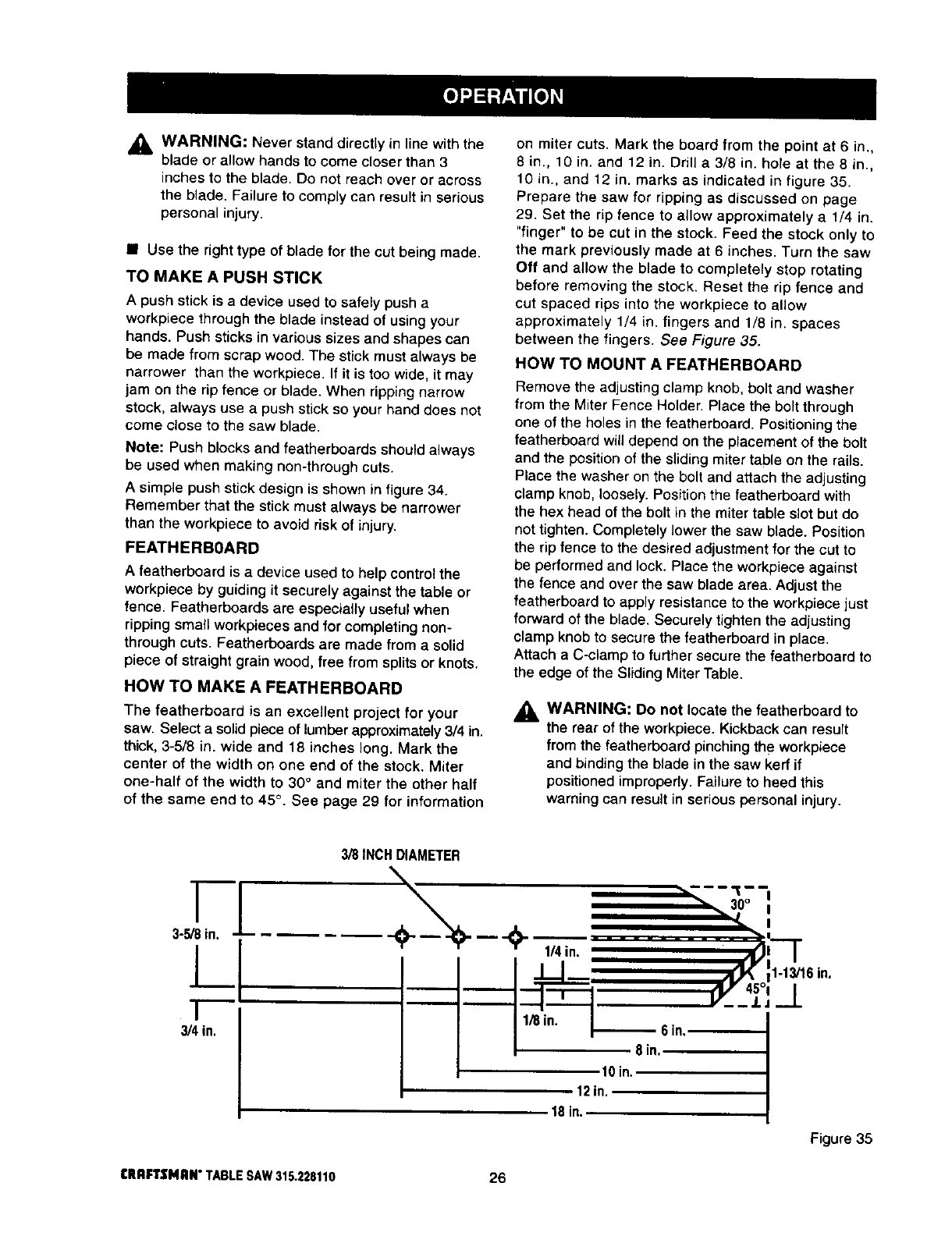
_ WARNING: Never stand directly in line with the
blade or allow hands to come closer than 3
inches to the blade. Do not reach over or across
the blade. Failure to comply can result in serious
personal injury,
• Use the right type of blade for the cut being made.
TO MAKE A PUSH STICK
A push stick is a device used to safely push a
workpiece through the blade instead of using your
hands. Push sticks in various sizes and shapes can
be made from scrap wood. The stick must always be
narrower than the workpiece. If it is too wide, it may
jam on the rip fence or blade. When ripping narrow
stock, always use a push stick so your hand does not
come close to the saw blade.
Note: Push blocks and featherboards should always
be used when making non-through cuts.
A simple push stickdesign is shown in figure 34.
Remember that the stick must always be narrower
than the workpiece to avoid risk of injury.
FEATHERBOARD
A featherboard is a device used to help control the
workpiece by guiding it securely against the table or
fence. Featherboards are especially useful when
ripping small workpieces and for completing non-
through cuts. Featherboards are made from a solid
piece of straight grain wood, free from splitsor knots.
HOW TO MAKE A FEATHERBOARD
The featherboard is an excellent project for your
saw. Select a solid piece of lumber approximately 3/4 in.
thick, 3-5/8 in. wide and 18 inches long. Mark the
center of the width on one end of the stock. Miter
one-half of the width to 30° and miter the other half
of the same end to 45°. See page 29 for information
on miter cuts. Mark the board from the point at 6 in.,
8 in., 10 in. and 12 in. Drill a 3/8 in. hole at the 8 in.,
10 in., and 12 in. marks as indicated in figure 35.
Prepare the saw for ripping as discussed on page
29. Set the rip fence to allow approximately a 1/4 in.
"finger" to be cut in the stock. Feed the stock only to
the mark previously made at 6 inches. Turn the saw
Off and allow the blade to completely stop rotating
before removing the stock. Reset the rip fence and
cut spaced rips into the workpiece to allow
approximately 1/4 in. fingers and 1/8 in. spaces
between the fingers. See Figure 35.
HOW TO MOUNT A FEATHERBOARD
Remove the adjusting clamp knob, bolt and washer
from the Miter Fence Holder. Place the bolt through
one of the holes in the featherboard. Positioning the
featherboard will depend on the placement of the bolt
and the position of the sliding miter table on the rails.
Place the washer on the bolt and attach the adjusting
clamp knob, loosely. Position the featherboard with
the hex head of the bolt in the miter table slot but do
not tighten. Completely lower the saw blade. Position
the rip fence to the desired adjustment for the cut to
be performed and lock. Place the workpiece against
the fence and over the saw blade area. Adjustthe
featherboard to apply resistance to the workpiece just
forward of the blade. Securely tighten the adjusting
clamp knob to secure the featherboard in place.
Attach a C-clamp to further secure the featherboard to
the edge of the S_idingMiter Table.
_lh WARNING: Do not locate the featherboard to
the rear of the workpiece. Kickback can result
from the featherboard pinching the workpiece
and binding the blade in the saw kerf if
positioned improperly. Failure to heed this
warning can result in seriouspersonal injury.
3/4 in.
3/8 INCH DIAMETER
1/4 in.
1/8 in.
6in,--
8 in.
10in.
12in.
18in.
1-13/16in.
Figure 35
CRBFTSMIIN"TABLESAW315.228110 26



